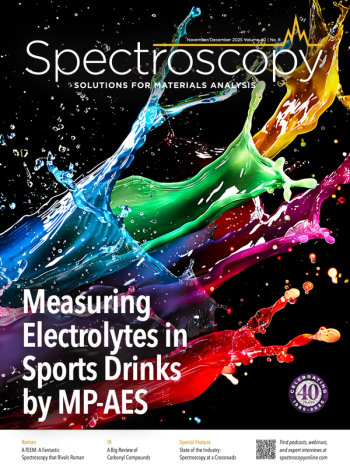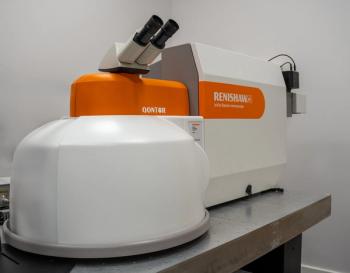
How Chemometrics-Based Approaches Are Advancing the Brazilian Coffee Industry
A recent review article explored the Brazilian coffee industry and how spectroscopic- and chemometrics-based approaches are helping to ensure the authenticity and quality of Brazilian coffee.
Brazil is one of the main exporters of coffee globally. As a result, Brazil’s economy relies on the mass production of coffee, which can be negatively impacted if their coffee products suffer a drop in quality. As a result, it is important for the Brazilian government to test to make sure that the coffee products entering the market are genuine. In a recent review article, Juliana Azevedo Lima Pallone from the Universidade Estadual de Campinas (UNICAMP) and her team of researchers explored this issue at length (1).
The review article discusses Brazil’s prominence in the coffee market, especially with its specialty Coffea canephora, particularly in the Amazon region, Espírito Santo, and Bahia (1). Unfortunately, canephora has historically been associated with lower-quality coffee (1). As the review highlights, the variety is often perceived as less refined than arabica, a challenge that has impacted its reputation both locally and internationally. Yet, Brazil’s coffee producers and researchers are committed to changing this perception by focusing on the unique chemical and sensory profiles of canephora grown in Brazil’s distinct terroirs (1).
Brazil’s varied environmental conditions, including its diverse soil types, climate, and altitude, influence the characteristics of its canephora coffee (1). As the 2024 Brazil drought shows, environmental conditions greatly influence the amount and quality of the coffee beans grown for these specialty blends that Brazil ships globally (2). Although arabica coffee has been extensively studied in terms of how these factors affect its flavor and quality, canephora is only beginning to receive the same level of scientific scrutiny (1).
The rise of specialty canephora production comes with a set of challenges. One of the key obstacles is ensuring that these coffees are cultivated sustainably, particularly in the Amazon region, where deforestation remains a critical environmental issue (1,3). Brazil’s numerous small-scale farms present difficulties in monitoring and verifying sustainable farming practices. This necessitates the development of standardized production protocols that align with sustainability and quality standards, ensuring that specialty canephora can compete in the global market (1).
One of the critical points addressed in the review is the lack of standardized tasting and production protocols for Brazilian canephora. The researchers emphasize the importance of involving local experts and professional cuppers in developing these standards to ensure that Brazilian canephora can be consistently recognized for its quality (1). Establishing these protocols would also enable more reliable sustainability claims, which are increasingly important to consumers and exporters alike.
There are also significant opportunities in developing specialty standards for soluble coffee made from canephora. As consumer demand for convenience grows, the challenge will be to meet this demand without compromising the high-quality and ethical standards that are being developed for Brazilian canephora (1).
To combat the stigmatization of canephora as a lower-quality coffee, the review highlights the role of advanced analytical techniques like spectroscopy and chemometrics in confirming coffee quality, authenticity, and traceability. These techniques, particularly non-targeted spectroscopic analyses, offer comprehensive spectral fingerprints of the coffee, allowing for more accurate assessments of its chemical composition and geographical origin (1).
Chemometrics, a data science approach that combines chemistry, statistics, and mathematics, can enhance the interpretation of these spectral analyses, providing coffee producers, exporters, and consumers with detailed information about the coffee’s authenticity and quality (1,4). These tools can help verify that the coffee aligns with the standards of premium specialty products, further boosting Brazil’s reputation as a producer of high-quality canephora (1).
By leveraging spectroscopy and chemometrics to ensure quality and authenticity, Brazil can position itself as a global leader in premium canephora coffee, benefiting local farmers, enhancing economic prospects, and contributing to the preservation of the Amazon region.
References
- Baqueta, M. R.; Diniz, P. H. G. D.; Pereira, L. L.; et al. An Overview on the Brazilian Coffea Canephora Scenario and the Current Chemometrics-based Spectroscopic Research. Food Res. Int. 2024, 194, 114866. DOI:
10.1016/j.foodres.2024.114866 - Pessoa, G. S.; Durbin, D.-A. Brazil Drought Punishes Coffee Farms and Threatens to Push Prices Even Higher. AP News. Available at:
https://apnews.com/article/brazil-climate-change-drought-coffee-harvest-a6516a4b314e6ba7c11513c08afb6996 (accessed 2024-10-10). - Santos, S. F. Amazon Rainforest: Deforestation Rate Halved in 2023. BBC.com. Available at:
https://www.bbc.com/news/world-latin-america-67962297 (accessed 2024-10-10). - Ribeiro, J. S.; Ferreira, M. M. C.; Salva, T. J. G. Chemometric Models for the Quantitative Descriptive Sensory Analysis of Arabica Coffee Beverages Using Near Infrared Spectroscopy. Talanta 2011, 83 (5), 1352–1358. DOI:
10.1016/j.talanta.2010.11.001
Newsletter
Get essential updates on the latest spectroscopy technologies, regulatory standards, and best practices—subscribe today to Spectroscopy.



